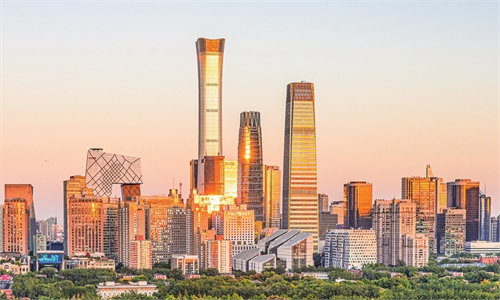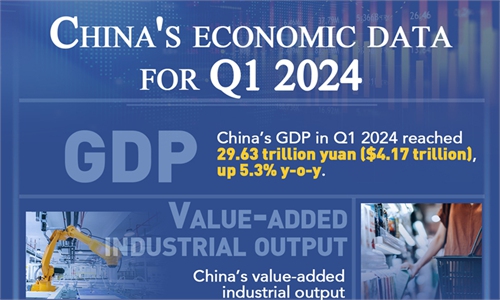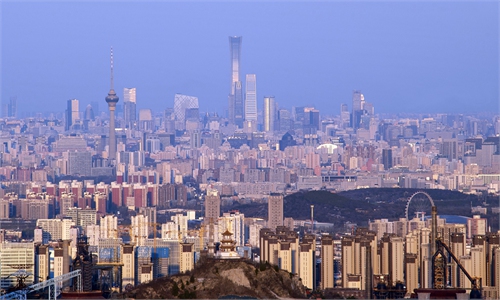China’s economy poised to further revive on back of GDP growth of major provinces, with new drives and favorable conditions

This photo taken on April 23, 2024 shows a view in southwest China's Chongqing Municipality. Chongqing is the only municipality in the central and western region of China. Built on mountains and partially surrounded by the Yangtze and Jialing rivers, it is known as a "mountain city" and a "city on rivers".(Photo: Xinhua)
Local economies in China fared well in the first quarter by developing new quality productive forces, while domestic demand revived and industries grew robustly. The momentum will be sustained, observers said on Tuesday, after 31 provincial-level regions reported GDP growth figures.
A total of 13 province-level regions achieved GDP levels of more than 1 trillion yuan ($141.18 billion). The economies of South China's Guangdong Province and East China's Jiangsu Province, China's manufacturing hubs, each exceeded 3 trillion yuan - 3.15 trillion yuan for Guangdong and 3.10 trillion yuan for Jiangsu.
In terms of growth rates, 16 regions grew faster higher than the country's 5.3 percent increase, and eight localities reported GDP growth of more than 6 percent. Northeast China's Jilin Province led the nation with a 6.5 percent expansion, followed by Jiangsu and Chongqing at 6.2 percent each.
Economic powerhouse provinces played a vital role in bolstering China' s economic development and stabilizing the nation's fundamentals. Local economic progress was achieved by developing new quality productive forces, as their traditional industries are relatively mature, Hu Qimu, a deputy secretary-general of the digital-real economies integration Forum 50, told the Global Times on Tuesday.
The stable growth of the powerhouses demonstrated the country's economic resilience and vitality, Wang Peng, an associate research fellow at the Beijing Academy of Social Sciences, told the Global Times on Tuesday.
Investment in emerging industries in Guangdong remained robust in the first quarter - up 22.4 percent in the advanced manufacturing sector and up 33.3 percent in the high-tech manufacturing sector.
Output of new-energy vehicles in Beijing grew by 2.4 times year-on-year in the first quarter while production of integrated circuits increased by 22.6 percent, according to media reports.
The added value of Jiangsu's manufacturing industry rose by 7.3 percent year-on-year, accounting for 35.9 percent of the provincial GDP. The rapid development of the private economy in Chongqing contributed 67.5 percent of its economic growth, driving up the local economy by 4.2 percentage points.
Thanks to its large real economy, China's monetary and fiscal policies have been able to diverge from global policies in a bid to stabilize economic growth, and policy implementation is dedicated to domestic market entities, Hu said.
China has been optimizing and adjusting its industrial structure by replacing low-end production capacity with high-end production capacity, Hu added.
Experts remain upbeat on China's economic recovery given these favorable conditions.
Supportive policies, a consumption rebound, the fast development of emerging industries and steady investment growth will continue to provide impetus to China's GDP growth, especially given the optimized industrial structure, Wang said.
The first-quarter figures were influenced by the resumption of production activities after the Spring Festival holidays. Hu said that second-quarter GDP growth should improve, and growth in the second half may further accelerate if the momentum is sustained.



